Palm Springs Modernism Week 2011
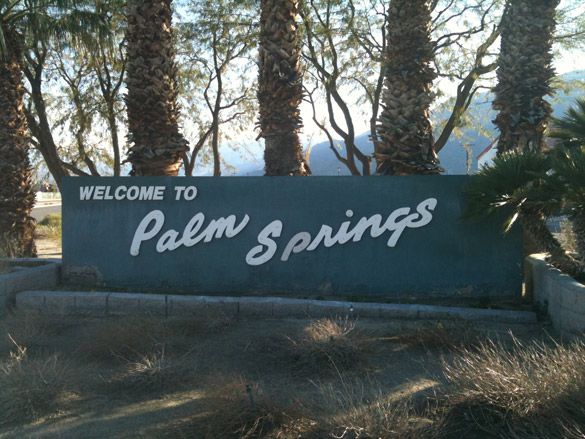
Fifteen years ago, when the design cognoscenti descended on Palm Springs, cleared away the tumbleweeds and started to renovate the 1950s houses beneath them, they created a mini modernist revival.
The culmination of their efforts is Palm Springs Modernism Week, (17-27 February), a small but growing festival of exhibitions, tours, lectures, films and parties. For ten days, a discerning, in-the-know crowd flocks to the desert town to sneak a peek at iconic and rarely-seen homes, courtesy of benevolent owners, sip cocktails at exclusive soirees and snap up mid-century finds in quirky shops and galleries – all to a backdrop of Rat Pack tunes, sunshine and retro vibes.
The Woodstock of Modernism fairs
It may jokingly be dubbed ‘the Woodstock of modernism fairs’, but the Palm Springs festival has a savvy commercial edge. Heavyweight dealers and collectors from all over the US also pitch up. At the convention centre, more than 75 galleries LA’s Reform gallery, Zeitgeist from Denver, New York dealer Mark McDonald and Chicago’s Converso gallery among them, trade rare and big ticket mid century pieces. New faces such as Object USA, a San Diego gallery eager to promote the little known arts and crafts scene from that city, also make a debut. Collectors Jill Wiltse and Kirk Brown III come from Denver every year for the festival. ‘Sure, we buy things here,’ says Brown, as he places a reserve on silkscreen panel by the late Barney Reid. ‘You can find interesting and unusual things.’ In the uptown design district, stores such as Galleria, 20 First and Studio 111, and Hedge in Cathedral City, seal Palm Springs’ position as a year-round Mecca for all things mid-century, and during the festival, the area is humming with exhibitions, private views and openings.
The Riviera Hotel
The Riviera, a 1959 resort hotel renovated three years ago with a splash of kitsch, is the festival’s hub. Throughout the week, open top buses depart on tours around areas such as Movie Colony and Las Palmas, where knowledgeable volunteers point out classics such Richard Neutra’s Kaufmann House, the Edris House by E. Stewart Williams, Albert Frey’s bijou pad perched on a hilltop, as well as cool retro hotels such as the Orbit Inn and the Horizon. For smaller or bespoke tours, it’s worth contacting Robert Imber who starts his architectural odyssey from the breath-takingly futuristic Visitors Centre (designed by Frey in 1963) or Michael Stern, a writer and artist who can access almost any house in town.
Living legends
Wallpaper* Newsletter
Receive our daily digest of inspiration, escapism and design stories from around the world direct to your inbox.
Most exciting of all, though, some of the living legends who created Palm Springs and its aesthetic, put in guest appearances. This year, architects Donald Wexler and William Krisel were headline acts. Both have been the subject of films by art house filmmakers Design Onscreen, who held screenings, lectures and symposiums throughout the week. Both were prolific, major players in the 1950s and 1960s; both knew or worked with other (now deceased) grandees such as John Lautner, William Cody, E. Stewart Williams and A.Quincy Jones. Now in their 80s, they are clearly enjoying their renaissance. At a sell-out lecture in the nearby village of Rancho Mirage, Krisel says:‘ I’m being asked all the time to take on new projects, or to remodel my old tract houses. And I retired 20 years ago!’
Palm Springs Art Museum
In an exhibition entitled ‘Steel and Shade, the Architecture of Donald Wexler’, the small but perfectly formed Palm Springs Art Museum pays tribute to the architect, who, in his 60–year career, trained with Neutra, worked for Cody, and designed the Palm Springs Airport, as well as many schools, civic buildings and houses in the Coachella Valley. The exhibition runs until May 29, and it’s worth checking out the permanent collection and the glorious, shaded sculpture gardens.
The Menrad house
One of the most exquisitely renovated Krisel-designed homes is the Menrad house on the Twin Palms Estates in Palm Springs. Owner Chris Menrad, a former trader from Manhattan, bought the run-down property in 1999 and undertook a painstaking and thorough restoration, sourcing original paint colours and materials on eBay, and seeking Krisel’s advice and approval throughout. The estate was built in 1957 and all 12 houses were designed to the same floor plan, but positioned differently, and come with Krisel’s signature feature- the butterfly roof. ‘When I bought this house, it has undergone many modifications, but once I had taken it back to its original form, it is amazing how contemporary it looks,’ says Menrad.
Menrad’s purist approach is not uncommon in Palm Springs and he is a board member of the Palm Springs Modern Committee which actively seeks to preserve and promote many of the architectural gems that exist in the town and surrounding Coachella Valley. It pulled together the first mini modernism show back in 2000. Current festival director Jacques- Pierre Caussin, who organised Miami Modernism in the early 1990s and says; ‘Palm Springs was ready for it, and what started as a weekend symposium at the Art Museum has grown into an event with, we predict, around 25,000 visitors this year. We still want to improve on what we have.’
Palm Springs bounces back
Despite the ‘For Sale’ signs outside many properties, (and prices have plummeted since the crash), Palm Springs is bouncing back. The 200-acre Annenberg Estate, built by A.Quincy Jones in 1966 for publisher and diplomat Walter Annenberg, is this year opening as a museum and intellectual think tank. Next year, the art museum is opening a second gallery in the nearby town of Palm Desert, (the new A-list enclave) and it’s in the throes of securing a new space in which to open a design and architecture gallery on Palm Canyon Drive. Both the museum and the additional site were designed by E. Stewart Williams, a Palm Springs native, who built Frank Sinatra a house way out in the desert as one of his first commissions in 1947. William Holden, Bob Hope, Lucille Ball and a clutch of other presidents, royals and movie stars followed – and the rest is history.
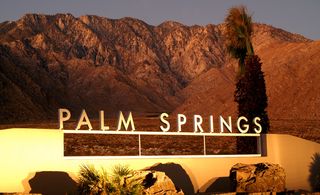
now stands in contrast to the new mid-century modernist-style sign
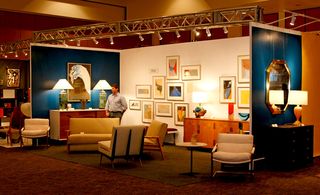
The week may jokingly be dubbed 'the Woodstock of modernism fairs', but the Palm Springs festival has a savvy commercial edge. Heavyweight dealers and collectors from all over the US pitch up.
photography by Gregg Felsen
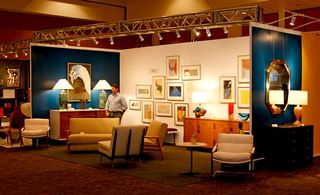
At the convention centre, more than 75 galleries, LA’s Reform gallery, Zeitgeist from Denver, New York dealer Mark McDonald and Chicago’s Converso gallery among them, trade rare and big ticket mid century pieces
photography by Gregg Felsen
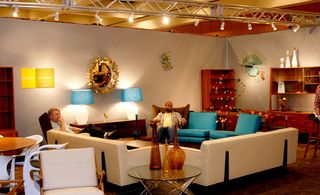
Collectors Jill Wiltse and Kirk Brown III come from Denver every year for the festival. ‘Sure, we buy things here,’ says Brown, as he places a reserve on silkscreen panel by the late Barney Reid. ‘You can find interesting and unusual things.’
photography by Gregg Felsen
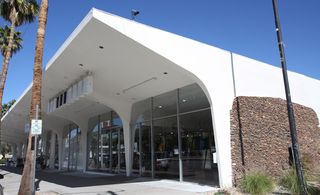
In the uptown design district, stores such as Galleria, 20 First and Studio 111, and Hedge in Cathedral City, seal Palm Springs’ position as a year-round Mecca for all things mid-century, and during the festival, the area is humming with exhibitions, private views and openings
photography by Jamie Durie
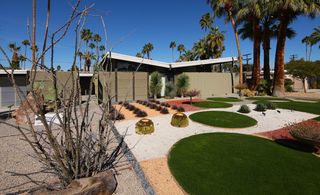
The Menrad House
One of the most exquisitely renovated William Krisel-designed homes is the Menrad house on the Twin Palms Estates in Palm Springs. Owner Chris Menrad, a former trader from Manhattan, bought the run-down property in 1999 and undertook a painstaking and thorough restoration.
photography by Darren Bradley
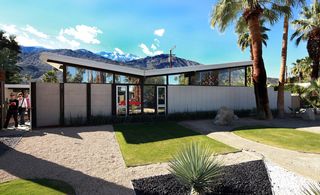
The Menrad House
The estate was built in 1957 with a total of 85 houses, 12 of which were designed by Menrad. These all had the same floor plan, although were positioned differently, and all come with Krisel’s signature feature- the butterfly roof.
photography by Darren Bradley
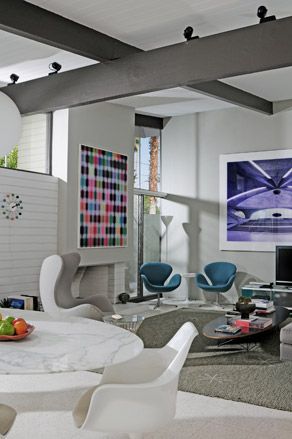
The Menrad House
Menrad went to great lengths with the interior, sourcing original paint colours and materials on eBay..
photography by Dan Chavkin
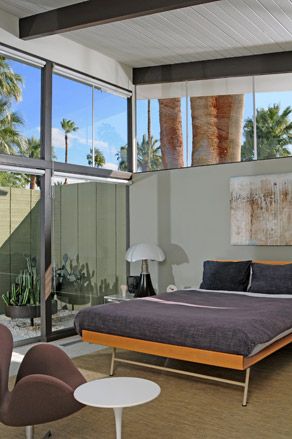
The Menrad House
..and seeking Krisel’s advice and approval throughout.
photography by Dan Chavkin
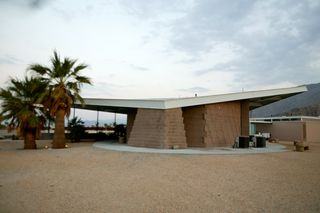
The Palm Springs Visitors Centre, designed as the Tramway gas station by Albert Frey in 1963
photography by Jamie Durie
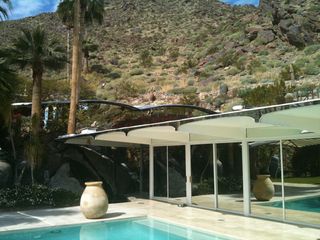
The Burgess House
Designed in 1958 by Hugh Kaptur and William Burgess, with mirrored glass and canopies by Albert Frey
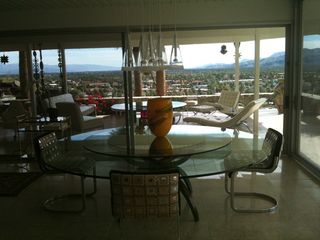
The Burgess House
Interior
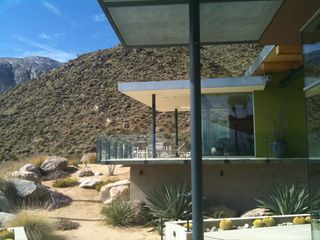
Linsky House
The stunning desert house owned by realtor Andy Linsky and built by local architect Ana Escalante
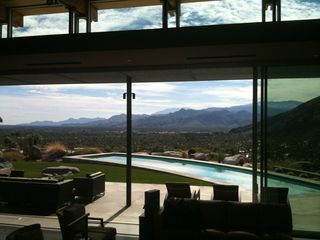
The Linsky House
The living room is fitted with a 32-foot-long glass wall, which due to the steel beams hidden in the ceiling and upper roof, is uninterrupted by columns. Above, six clerestory windows bring in additional light.
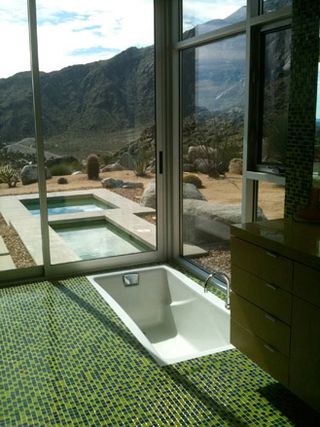
The Linsky House
The bathtub offers a spectacular view, with a water feature and al fresco hot tub just outside
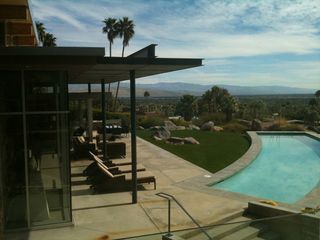
The Linsky House
Escalante pushes glazing technology to its extreme with hi-tech specifications that allow in light but keep out harmful rays and keep desert temperatures in check
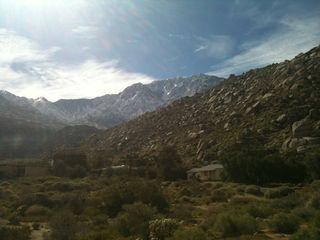
The Linsky House
The view from the house over the San Jacinto Mountains
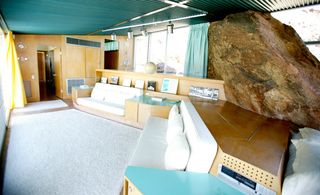
The Albert Frey House
Built by the eccentric Swiss architect for himself in 1963-4, the house embodies the Desert Modern style he established in Palm Springs
photography by Jamie Durie
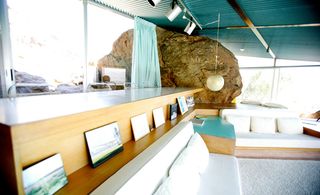
The Albert Frey House
A mammoth boulder features as part of the distinctive interior
photography by Jamie Durie
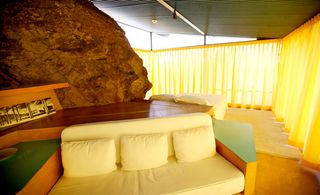
The Albert Frey House
The bright yellow curtains are tribute to the yellow flowers seen across the region
photography by Jamie Durie
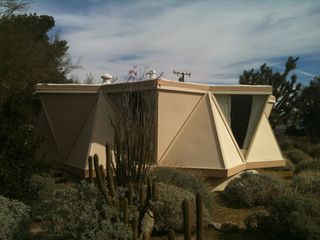
The D'Angelo House
Located in Snow Creek, about 20 minutes outside of Palm Springs. Built in 1962 as an experimental house for an aluminium magnate, it turns 180 degrees and back again to shelter occupants from the sun.
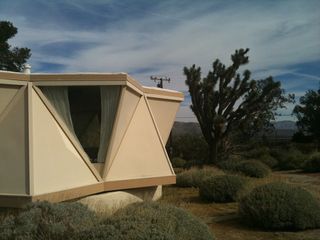
The D'Angelo House
For the rotating accompaniment D'Angelo turned to his aerospace engineer friend Harry Conrey.
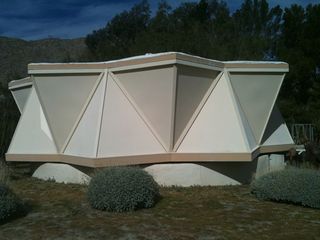
The D'Angelo House
All the mechanical components sit beneath the raised house, concealed behind concrete
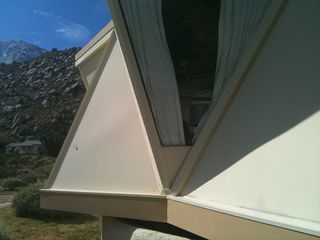
The D'Angelo House
D'Angelo reported that it revolves at such a slow speed there is no sensation of movement
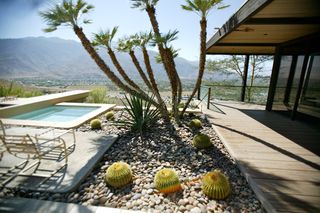
The Holden House
A house in the hills designed by Hugh Kaptor for the actor William Holden in 1977
photography by Jamie Durie
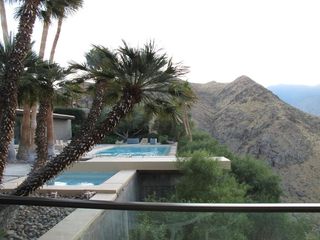
The Holden House
The extended concrete slab which hold the barbeque pit sweeps out over the cliff
photography by Jamie Durie
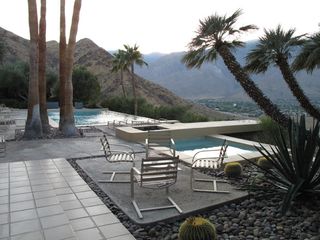
The Holden House
..offering sweeping mountain views
photography by Jamie Durie
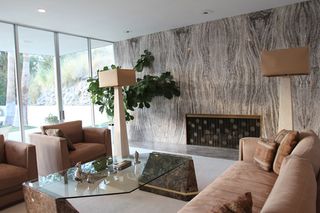
The Rapp House
A house in the hills designed by William Cody features many original interior details by the late designer Arthur Elrod and is owned by Gregg Rapp
photography by Jamie Durie
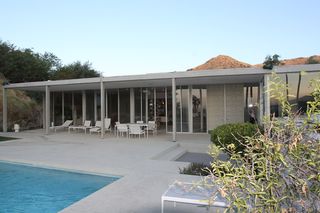
The Rapp House
Poolside
photography by Jamie Durie
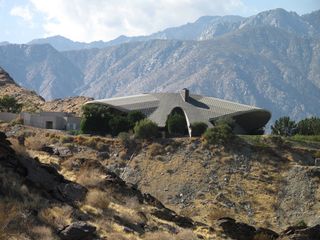
The Hope House
Designed with privacy in mind for Bob Hope by John Lautner in 1979
photography by Jamie Durie
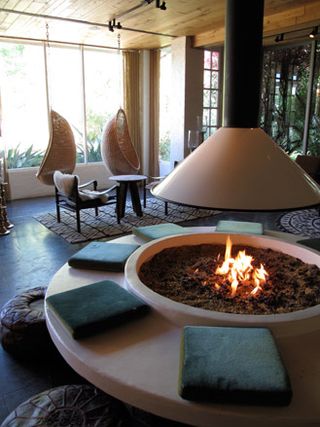
Parker Palm Springs Hotel
photography by Jamie Durie
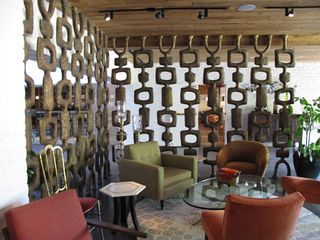
Parker Palm Springs Hotel
photography by Jamie Durie
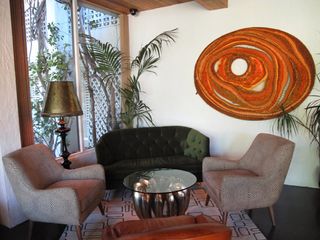
Parker Palm Springs Hotel
photography by Jamie Durie
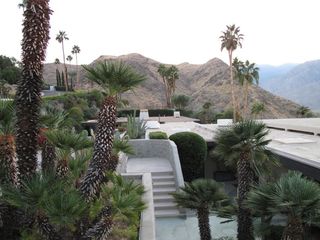
The Holden House
The rooftop terrace of the house designed for actor William Holden by Hugh Kaptor designed in 1977
photography by Jamie Durie
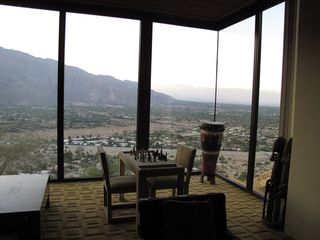
The Holden House
Interior of the Wiliam Holden house, with floor to ceiling windows that make the most of the house's elevated position
photography by Jamie Durie
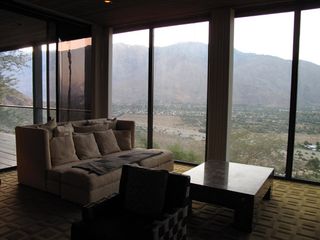
The Holden House
photography by Jamie Durie
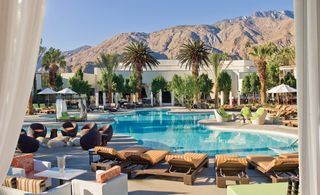
Poolside at The Riviera (the festival’s hub), a 1959 resort hotel renovated three years ago with a splash of kitsch
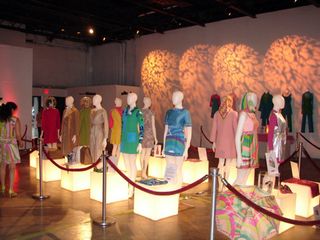
If You’ve Got it, Flaunt it exhibition at the Riviera Hotel devoted to the history of Braniff Airlines
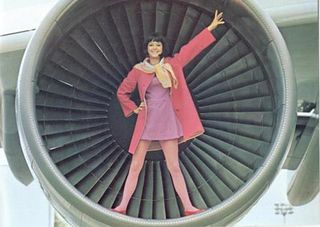
The American airline ceased operation in 1982 but earnt a reputation among fashionistas for its use of Pucci, and later Halston, to dress their hostesses
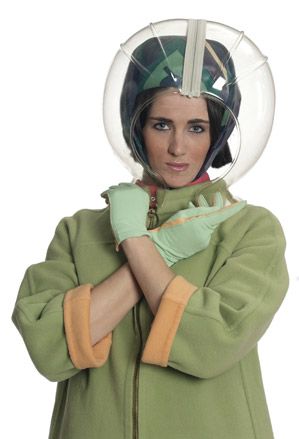
The Pucci helmet, designed in 1965 to stop Braniff air stewardesses mussing up their hair as they crossed the runway
Emma O'Kelly is a freelance journalist and author based in London. Her books include Sauna: The Power of Deep Heat and she is currently working on a UK guide to wild saunas, due to be published in 2025.
-
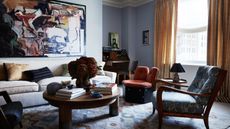 Step inside this Upper East Side jewel box apartment
Step inside this Upper East Side jewel box apartmentThis radiant Lexington Avenue home is a harbinger of good things for the Upper East Side, and the latest focus of The Inside Story, our series spotlighting intriguing and innovative interior design
By Anna Solomon Published
-
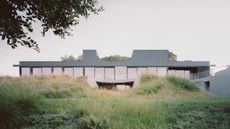 A new hilltop California home is rooted in the landscape and celebrates views of nature
A new hilltop California home is rooted in the landscape and celebrates views of natureWOJR's California home House of Horns is a meticulously planned modern villa that seeps into its surrounding landscape through a series of sculptural courtyards
By Jonathan Bell Published
-
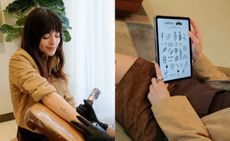 Is a tiny tattoo the best holiday souvenir? Kimpton Hotels think so
Is a tiny tattoo the best holiday souvenir? Kimpton Hotels think soIn partnership with Tiny Zaps, Kimpton Hotels is bringing city-inspired tattoo pop-ups to five U.S. locations
By Sofia de la Cruz Published